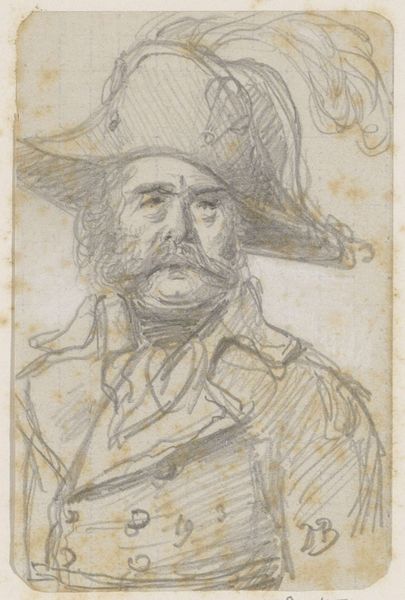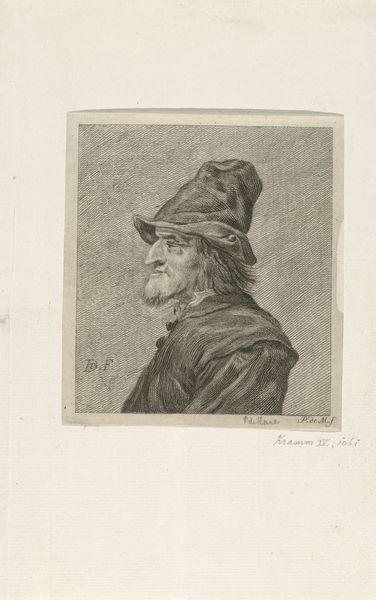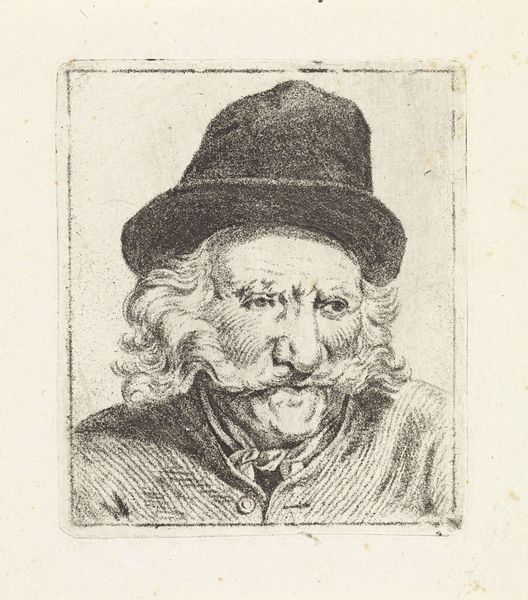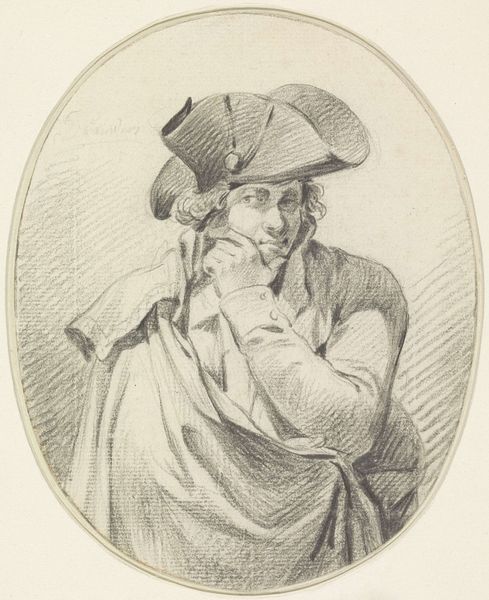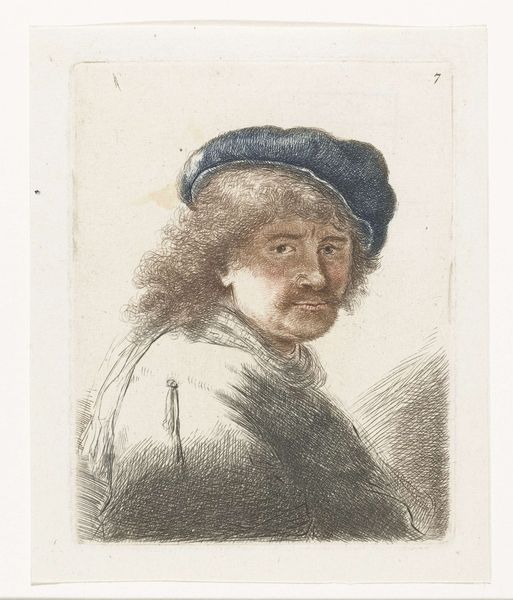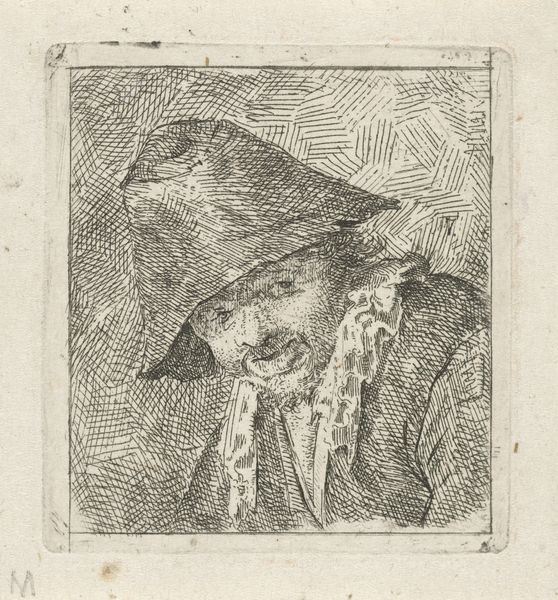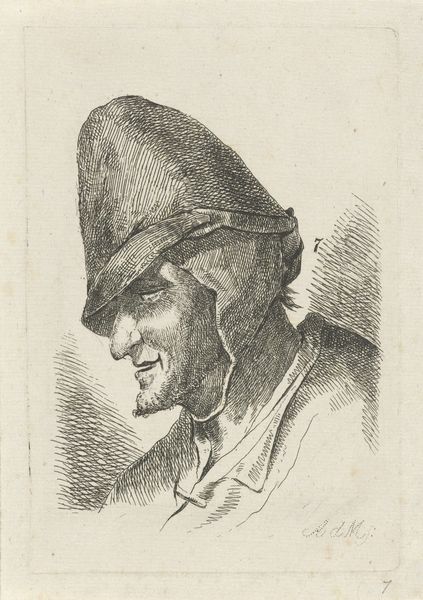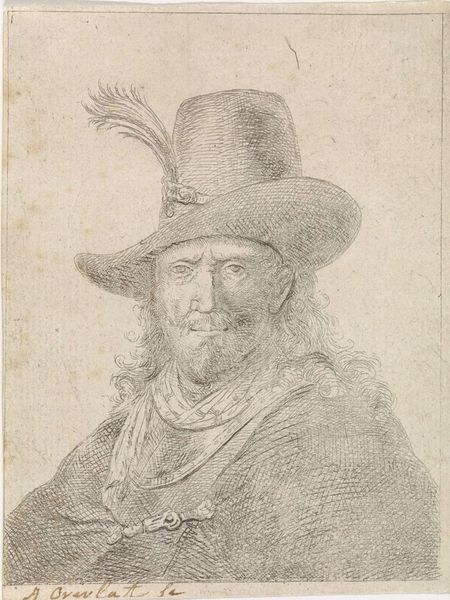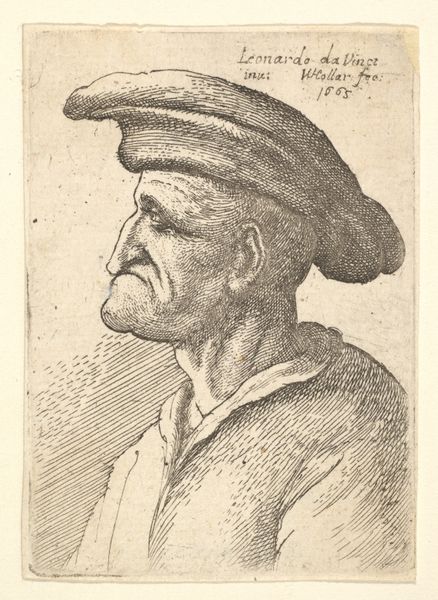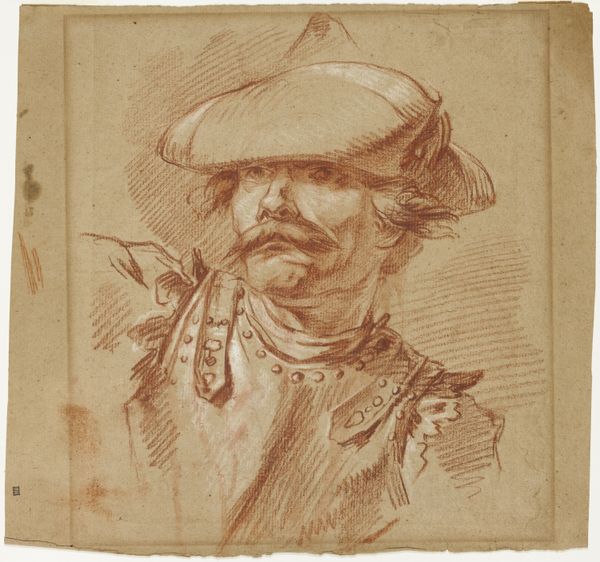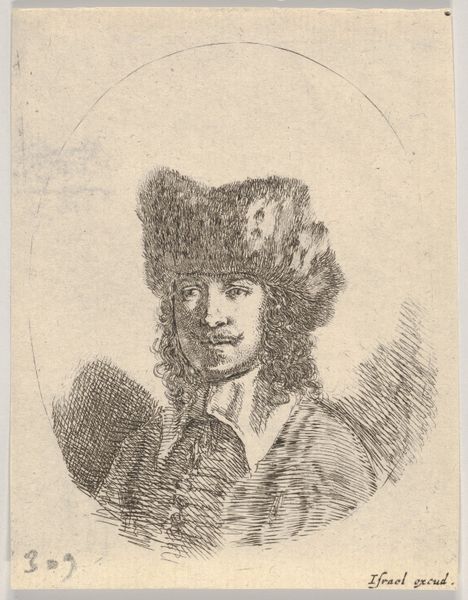
#
pencil drawn
#
amateur sketch
#
toned paper
#
light pencil work
#
pencil sketch
#
charcoal drawing
#
pencil drawing
#
portrait drawing
#
watercolour illustration
#
watercolor
Dimensions: height 102 mm, width 85 mm
Copyright: Rijks Museum: Open Domain
Cornelis Troost created this watercolor drawing of 'De schout Wolfhart Grijpert' during the Dutch Golden Age, a period marked by economic prosperity and cultural flourishing, but also stark social hierarchies. Troost, known for his theatrical scenes and portraits, captures the figure of Wolfhart Grijpert, a 'schout' or bailiff, in profile. The bailiff, recognizable by his tricorn hat and stern expression, was a figure of authority, responsible for upholding law and order in the community. But what kind of order? In a society deeply stratified by class, the bailiff's role often meant preserving the power of the elite. Troost’s portrayal invites us to reflect on the relationship between power and representation. His image is not merely a likeness; it's a commentary on the social order of the time. How might the drawing’s original audience have perceived Grijpert’s role and status? What does it tell us about the negotiation of identity, authority, and social perception in the Dutch Golden Age?
Comments
No comments
Be the first to comment and join the conversation on the ultimate creative platform.
